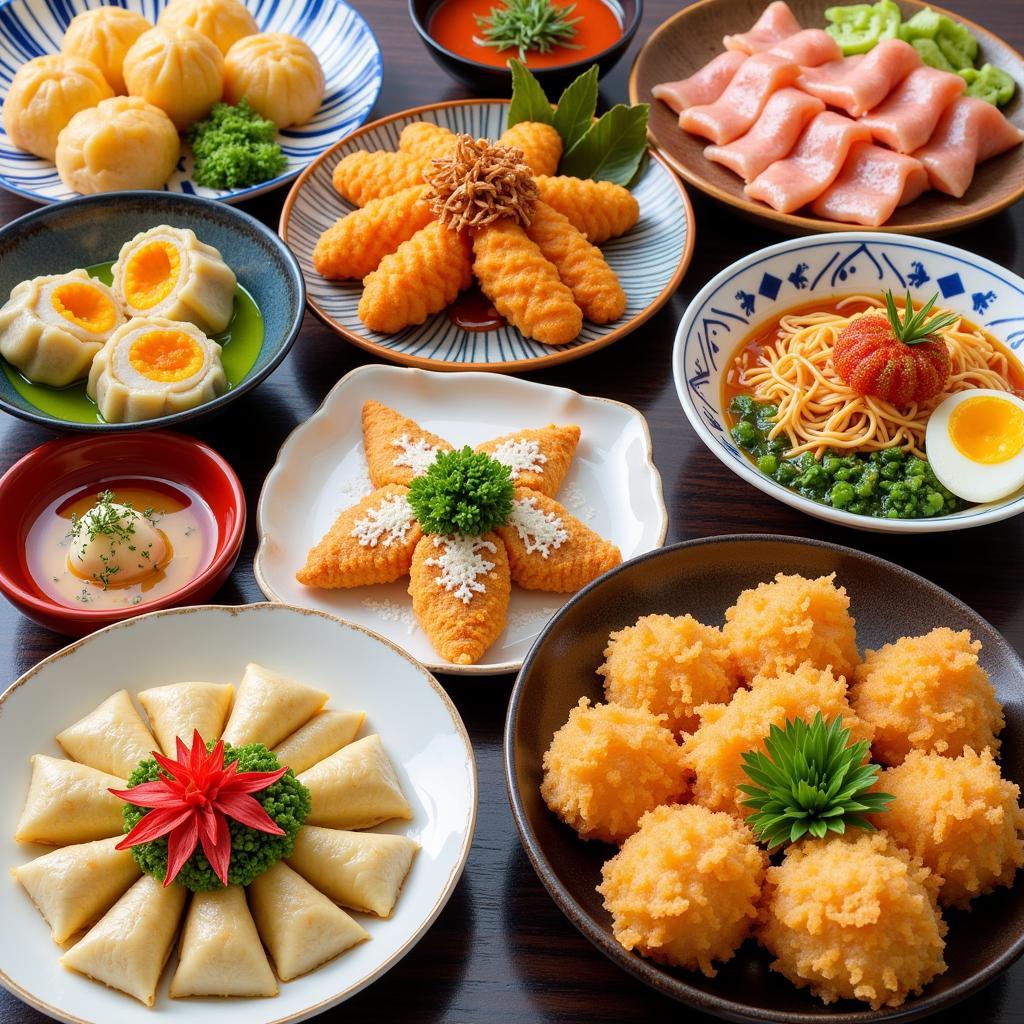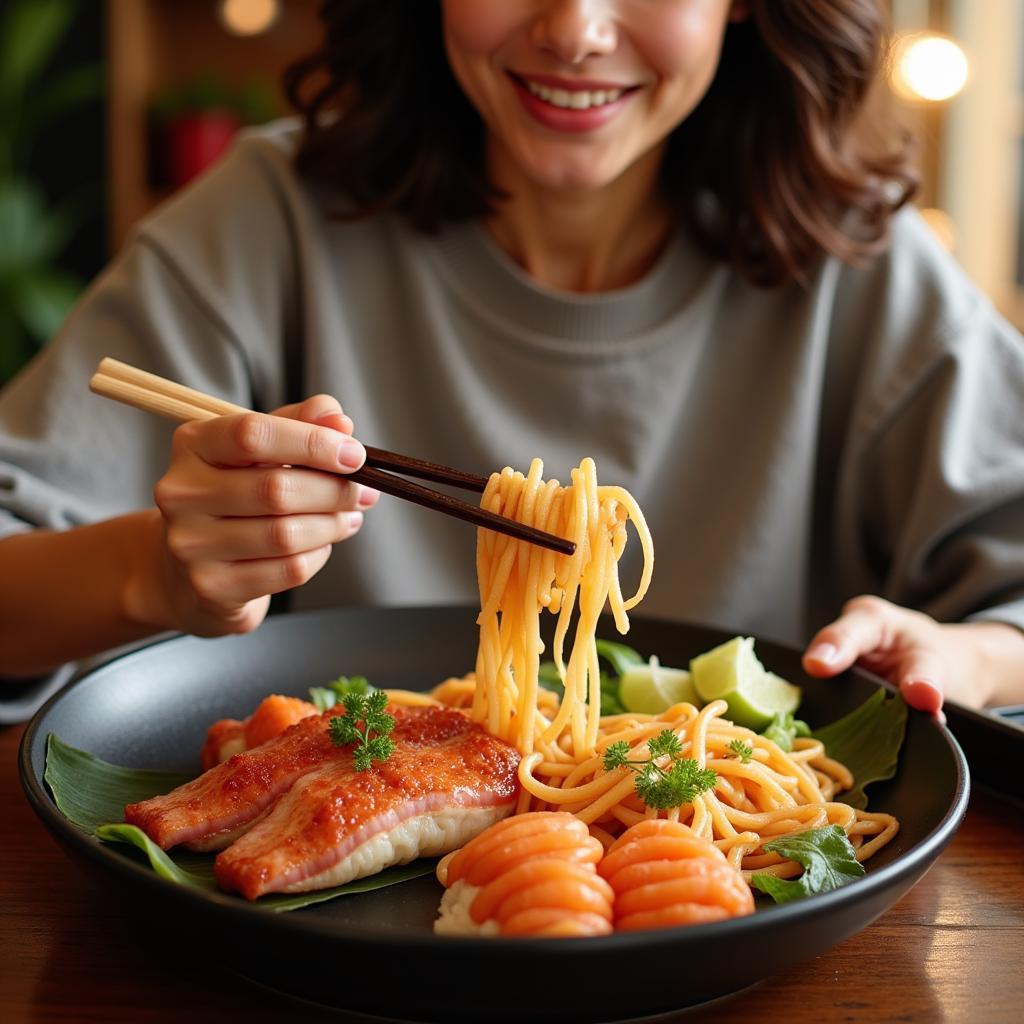Japanese Frozen Food has revolutionized how people experience authentic Japanese cuisine at home. From traditional favorites to modern innovations, the variety and quality of Japanese frozen meals offer a convenient and delicious way to enjoy the flavors of Japan. This comprehensive guide delves into the fascinating world of Japanese frozen food, exploring its history, popular dishes, and the reasons behind its growing popularity. After reading this, you’ll be ready to stock your freezer with the best Japan has to offer!
A Brief History of Japanese Frozen Food
The frozen food industry in Japan began in the 1960s, spurred by advancements in refrigeration technology and a growing demand for convenient meal options. Initially, frozen foods were seen as a practical solution for busy households, but they quickly evolved to encompass a wide array of dishes, reflecting the diverse culinary landscape of Japan. The industry’s commitment to quality and innovation has led to the creation of frozen meals that rival freshly prepared dishes in both taste and presentation. Check out our article on Asia frozen food to learn more about other amazing frozen foods from the continent.
Popular Japanese Frozen Food Choices
From savory gyoza and crispy tempura to comforting ramen and hearty donburi, the selection of Japanese frozen food caters to a wide range of tastes. Some popular choices include:
- Gyoza: Pan-fried or steamed dumplings filled with a mixture of minced meat, vegetables, and spices.
- Tempura: Lightly battered and deep-fried seafood and vegetables, often served with a dipping sauce.
- Ramen: A flavorful noodle soup with a variety of toppings, such as sliced pork, egg, and seaweed.
- Donburi: Rice bowls topped with meat, vegetables, or other ingredients, often simmered in a savory sauce.
- Takoyaki: Ball-shaped snacks filled with diced octopus, tempura scraps, pickled ginger, and green onion.
The Appeal of Japanese Frozen Food
What makes Japanese frozen food so appealing? It’s a combination of several factors:
- Convenience: Quickly prepare a delicious Japanese meal without extensive cooking skills or time.
- Authenticity: Many frozen meals maintain the authentic flavors and ingredients of traditional Japanese cuisine.
- Quality: High standards in the Japanese food industry ensure top-notch quality ingredients and preparation methods.
- Variety: A diverse selection of dishes caters to different preferences and dietary needs.
Why Japanese Frozen Food is Gaining Global Popularity
Japanese frozen food is not just popular in Japan – it’s becoming a global phenomenon. The appeal of experiencing authentic Japanese cuisine at home has resonated with consumers worldwide. This coupled with the increasing availability of these products in international markets has contributed to a surge in popularity.
 Variety of Japanese Frozen Food Options
Variety of Japanese Frozen Food Options
What are the Health Benefits of Japanese Frozen Food?
While convenience is a key factor, many Japanese frozen food options are also surprisingly healthy. Often incorporating fresh vegetables, lean proteins, and traditional cooking methods, they can be a part of a balanced diet. For additional information about other Asian frozen food options, you can refer to our guide on Asian frozen food brands.
“The advancements in freezing technology have allowed us to preserve the nutritional value and fresh flavors of Japanese ingredients,” says fictional expert Dr. Hiroko Sato, a renowned food scientist specializing in Japanese culinary traditions. “This means that consumers can enjoy a healthy and convenient meal without compromising on taste or quality.”
Cooking and Serving Japanese Frozen Food
Most Japanese frozen foods are designed for easy preparation. Clear instructions on the packaging guide you through the cooking process, whether it involves microwaving, steaming, or pan-frying.
How do I choose the best Japanese frozen food?
Choosing the best Japanese frozen food involves considering your taste preferences, dietary needs, and the quality of ingredients. Look for brands that prioritize fresh ingredients and authentic Japanese recipes.
“Don’t be afraid to experiment with different brands and flavors,” advises fictional culinary expert Kenji Tanaka, a celebrated chef known for his innovative approach to Japanese cuisine. “Japanese frozen food offers a world of culinary possibilities, from classic dishes to modern interpretations.”
Conclusion
Japanese frozen food provides a convenient and delicious way to enjoy the rich and diverse flavors of Japan. From traditional favorites to innovative creations, the variety and quality of these meals continue to impress and satisfy consumers worldwide. So, embrace the convenience and explore the exciting world of Japanese frozen food. You might just discover your new favorite meal! Learn more about the overall frozen food scene in Japan by visiting frozen food in Japan.
FAQ
- Where can I buy Japanese frozen food? Many Asian grocery stores and supermarkets now stock a selection of Japanese frozen meals.
- Are Japanese frozen meals expensive? Prices vary depending on the brand and dish, but they are generally affordable.
- Are Japanese frozen meals healthy? Many options incorporate fresh ingredients and traditional cooking methods, making them a healthy choice.
- How do I cook Japanese frozen food? Most meals have clear instructions on the packaging, usually involving microwaving, steaming, or pan-frying.
- What are some popular Japanese frozen food dishes? Gyoza, tempura, ramen, donburi, and takoyaki are just a few examples.
- Is Japanese frozen food authentic? Many brands prioritize authentic recipes and ingredients.
- Can I find vegetarian Japanese frozen food options? Yes, there are increasing vegetarian and vegan-friendly options available.
 Enjoying a Japanese Frozen Meal at Home
Enjoying a Japanese Frozen Meal at Home
You might also be interested in exploring freddo food or even checking out different food crumbs for adding that extra crunch to your dishes!
Need assistance? Contact us 24/7 at Phone: 02437655121, Email: [email protected] or visit us at 3PGH+8R9, ĐT70A, thôn Trung, Bắc Từ Liêm, Hà Nội, Việt Nam.